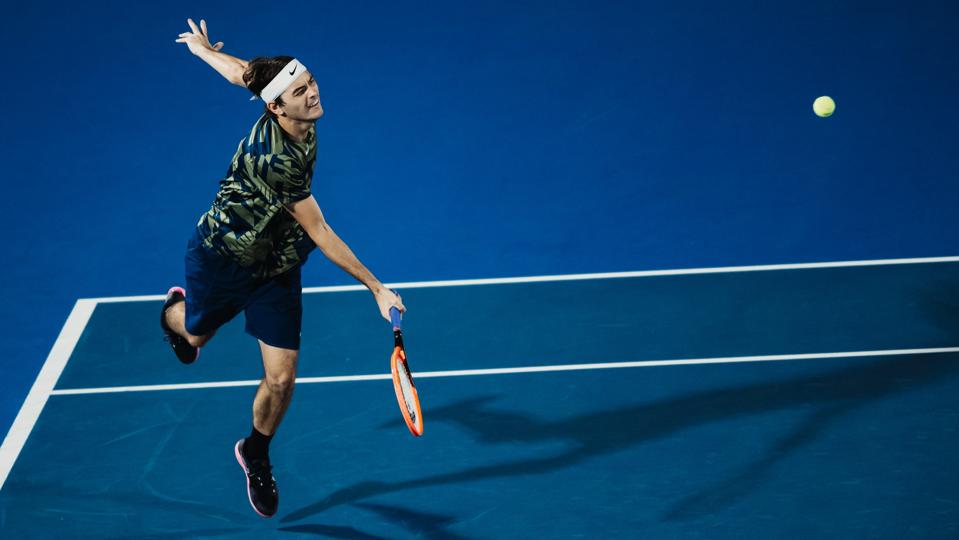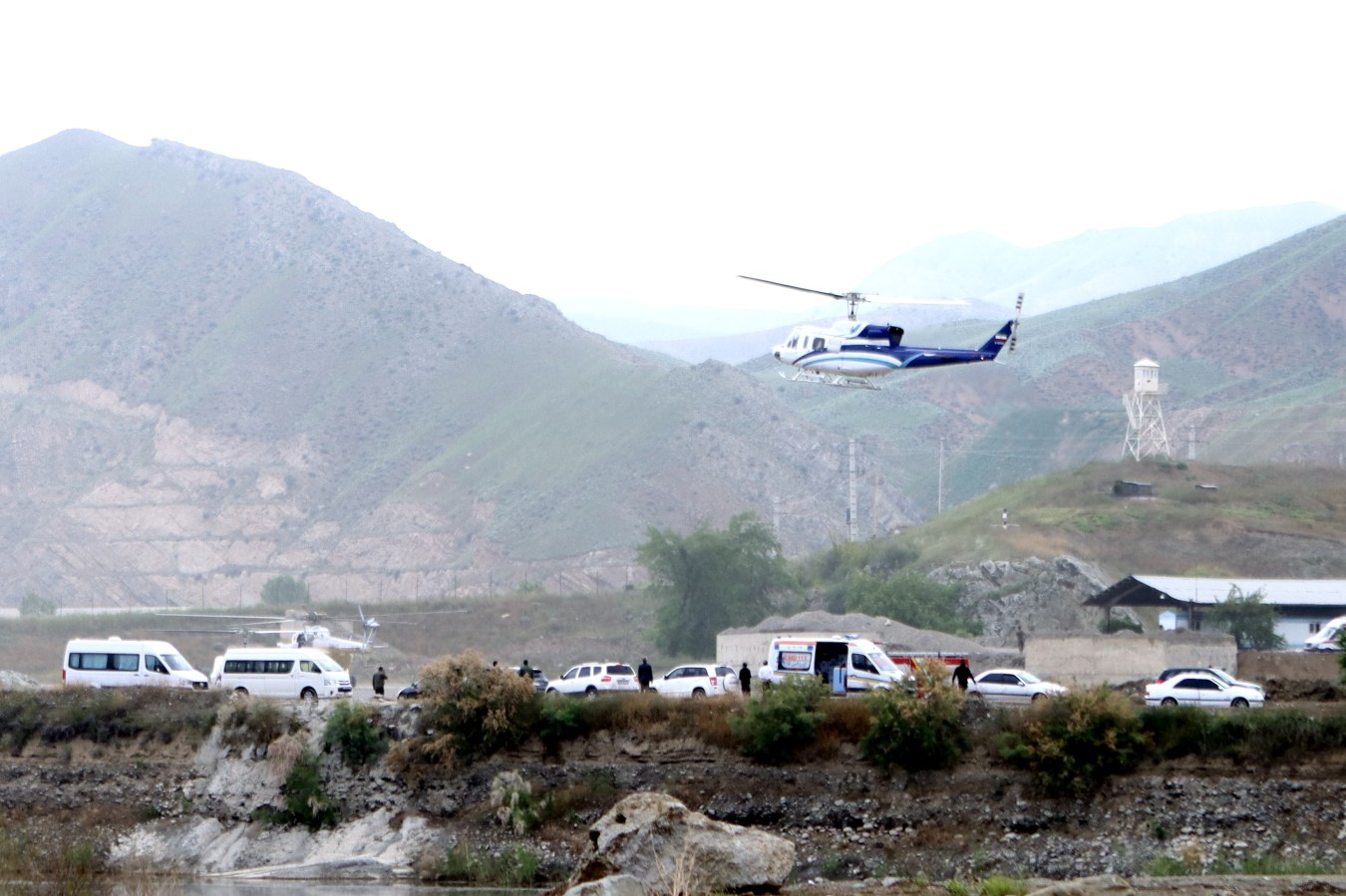Marking tennis as the next frontier for its foray into world sports, Saudi Arabia has secured the rights to host the Next Gen Finals for men’s under-21 tennis players until 2027 and the Women’s Tennis Association said it has not ruled out the Gulf state as a potential location for the tour’s season-ending competition, but it’s drawing mixed reaction from players at the U.S. Open who were quick to point out the country’s checkered history of women’s and LGBTQ rights abuses.

Taylor Fritz of the United States in action during day one of the Diriyah Tennis Cup Riyadh on December 08, 2022 in Riyadh, Saudi Arabia.
Getty Images for MatchMaker
Key Takeaways
- Ahead of the ongoing U.S. Open in New York City, several top women’s tennis stars said they would be “happy” to play WTA finals in Saudi Arabia while others, including legacy players Chrissie Evert and John McEnroe, said they prefer the sport to stay out of deals with the country that has funnelled massive amounts of money into golf and soccer in recent years.
- Aryna Sabalenka of Belarus, the world No. 2 player, said she’s “happy to go… wherever” the WTA finals are held this year; No. 5 player Ons Jabeur of Tunisia said she would be “very excited” to play in Saudi Arabia; but No. 3 Jessica Pegula, the top-ranked American, said she’d want to “see some sort of change” in regards to women’s rights before the WTA committed to hosting the finals in the country.
- Evert, who retired from the sport in 1989 with 18 major singles titles, said on an ESPN conference call that she “would prefer the WTA not go to Saudi Arabia” and McEnroe, who finished his singles career in 1994 with 77 titles, said he didn’t think the sport stood to benefit from aligning itself with the country.
- Saudi Arabia has held the Diriyah Tennis Cup exhibition tournament for the last several years and a slew of top men’s players competed in 2022 while being called on to speak out against the country’s human rights abuses, but a foray into the country would be particularly controversial for women’s tennis considering it’s abysmal women’s rights record.
- Saudi Arabia has spent at least $6.3 billion on sports deals since 2021 and critics have accused it of “sportswashing” its human rights abuse history while trying to enhance its reputation as a world player.
Related
Tangent
The World Economic Forum ranked Saudi Arabia 127th out of 153 countries in its 2022 Global Gender Gap Report. Saudi Arabia has made recent strides towards a more equitable gender treatment—a decades-old ban on female drivers was lifted in 2017, child marriages were banned in 2019 and single women have been allowed to live independently since 2021—but still lags far behind other developed nations. The country does not recognize LGBTQ rights and homosexuality is still punishable by imprisonment, death and beating. In 2020, a Yemeni blogger living in Saudi Arabia was sentenced to 10 months in jail, fined and deported after he posted a video on X, then called Twitter, saying, “LGBT people deserve rights.”

Tunisia’s Ons Jabeur hits a return to Colombia’s Camila Osorio during the US Open tennis tournament in New York City on August 29, 2023.
AFP via Getty Images
Key Background
Tennis would be the latest sport to receive an influx of cash in exchange for Saudi influence and participation on the world stage. The $650 billion Public Investment Fund of Saudi Arabia in 2021 launched a new LIV Golf tour under CEO and former golf No. 1 Greg Norman.
More than a dozen former top stars on the PGA Tour agreed to play after receiving lucrative offers, but the PGA told any players who did they’d be ineligible to compete in future events and warned them to distance themselves from the Saudi league. Earlier this year, however, a controversial merger of the PGA Tour with the European DP World Tour and the LIV Golf League was announced to create a new, unnamed entity.
The announcement was followed by swift criticism from players, fans and the families of Sept. 11 terrorist attack victims, who slammed the PGA tour as “paid Saudi shills.” In June, Saudi Arabia announced it would take control of four domestic football clubs—including Cristiano Ronaldo’s Al Nassr—and launched a campaign to lure top soccer talent to the country’s national league under a plan that included $1 billion wages for roughly 20 foreign players willing to relocate to the kingdom. Players who’ve signed to the Saudi Pro League since include Brazilian soccer striker Neymar, who joined the Riyadh-based Al Hilal on a reported $300 million contract, Karim Benzema, N’Golo Kante and Kalidou Koulibaly.
Saudi Arabia was also a sponsor of the 2023 Women’s World Cup, a move by FIFA that was criticized as an irresponsible business practice, and the country offered to pay for billions in stadium and other costs for Greece and Egypt in a joint bid to host the 2030 Men’s World Cup.

Neymar of Al Hilal Saudi FC is presented as new player in the Saudi Pro League at King Fahd International Stadium on August 19, 2023.
Getty Images
Big Number
$1 million. That’s how much the winner of the 2022 Diriyah Tennis Cup—American Taylor Fritz—took home in prize money. Individual winners in LIV Golf tournaments each receive $4 million.
Surprising Fact
This week marks the 50th anniversary of the U.S. Open offering equal prize money to both men and women. The Open has paid the genders equally since 1973 and was the first of the four Grand Slam tournaments to do so after Billie Jean King threatened to boycott the event. It wasn’t until 2007 that Wimbledon played men and women equally, and contests that still pay differently include the Western & Southern Open in Cincinnati and the National Bank Open in Canada. King earlier this summer said she supports talks between the women’s tour and Saudi Arabia, and said a WTA event in the country could help further its women’s rights movement.
This article was first published on forbes.com and all figures are in USD.



